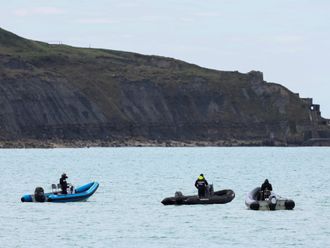London: Outside the idyllic English village of St Osyth, police are hunting a lion.
A small army of officers and tranquiliser-toting zoo experts, along with a pair of heat-seeking helicopters, are spending their Monday combing the woods, ponds, and farmland around the coastal community after a resident spotted what was believed to be a lion lounging in a field of grass.
Where such a beast may have come from is anyone’s guess — the local zoo says its animals are accounted for, and police have said a local circus isn’t missing any either.
But officers said they’re treating the sighting seriously, and so too are St Osyth’s 4,000 odd residents, if the local pub proprietor is to be believed.
“I wouldn’t expect to see a lion walking up the high street, but it seems to be very quiet in the village,” said Jason Amos, who owns St Osyth’s timber-framed Red Lion pub. “People are taking it very seriously.”
The sighting has prompted a media frenzy in Britain, with the Daily Mail tabloid splashing a picture of a snarling lion across its front page and camera crews racing to the historic village, which is built around medieval priory only a couple of miles from England’s south coast.
Amos said he’d just seen journalists from Britain’s Sky News television broadcasting from outside the pub.
Improbable sightings of dangerous animals are a familiar part of the British news cycle, particularly at the height of summer when journalists struggle to fill papers and news bulletins.
Last year, police in northern England scrambled a helicopter and passengers were stopped from leaving a train after a motorist reported seeing a lion (a hunt turned up nothing).
During the riots that hit London in 2011, there were rumours — quickly disproven — that a tiger was on the loose in the capital after escaping from the city zoo. And tabloid newspapers regular run stories about great white sharks spotted off the coast of Cornwall, in western England.












